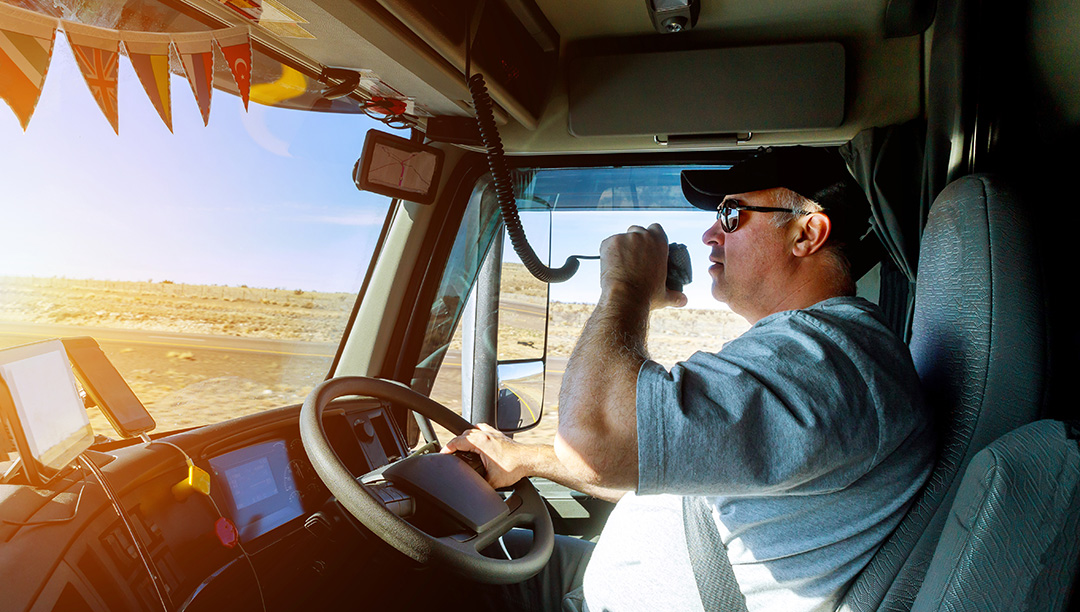Many employees work by themselves for at least part of their shifts, including delivery drivers, janitorial and housekeeping workers, home health workers, and night shift employees. Working alone comes with its own safety and security hazards, which vary widely from job to job. If your company employs lone workers, it’s important for them to have the tools and training they need to stay safe and perform their job duties.
Types of Lone Workers
The term “lone worker” typically refers to employees that work by themselves for some portion of their shift. Some workers may be alone for the entire shift, while others may only be alone for a few hours until the next shift begins or until they return to their workplace from a remote site.
Lone workers can be found in many different occupations. One-person retail or service industry establishments such as kiosks, food or beverage carts, and small gas stations or convenience stores are common examples.

Many delivery drivers can also count as lone workers, whether they’re delivering food, packages, or freight. Taxi or ridesharing drivers also work alone for most of their shifts. Workers can work alone on night shifts, weekends or other non-standard hours in places that normally have other personnel, such as facility maintenance or security jobs.
Finally, workers that have multiple work sites or don’t have a set workplace may also work alone, such as some construction workers, home health aides, land surveyors, or agricultural and forestry workers.
Lone Work Hazards
Employers must make sure workers are safe and fully prepared to perform their job duties before sending them out to work alone. Employers can determine what hazards their workers could be exposed to by performing a risk assessment and job hazard analysis (JHA). Risk assessments are generally completed before work begins to determine likely hazards and potential emergencies.
Risk assessments identify existing or potential hazards, implement measures to eliminate or control those hazards, and determine what specific tasks might require a JHA. JHAs evaluate site-specific hazards to identify any dangers associated with job tasks.
Looking for more online safety training content?
VIEW THE 800+ COURSES AVAILABLE!

Your company may perform a risk assessment to determine what hazards affect all lone workers at your company, and then perform a JHA to determine what hazards are unique to each worker’s specific job duties. Risk assessments and JHAs help employers and workers implement precautions to control hazards and protect workers, especially in emergencies. Your employees are valuable resources when crafting a JHA, since they have first-hand experiences of their challenges and hazards while they work.
Where are lone workers not allowed?
Not every job is suitable for working alone, both for legal and practical reasons. The Occupational Safety and Health Administration (OSHA) has listed certain job duties that require at least one other person to be present.
For example, permit-required confined space entry requires an attendant to wait at the space’s entrance in case entrants need to be removed from the space. Most high-voltage electrical work above 600 volts requires at least two qualified electrical workers to keep watch over one another. If hot work needs to be performed and combustible materials can’t be moved out of the area, a fire watcher must be on standby during work and for at least 30 minutes after hot work is finished.
Your company may also set its own policies that forbid working alone during certain duties, such as:
- Work requiring fall protection/aerial lifts
- Work involving hazardous chemicals/materials
- Cash handling
- Outdoor work when severe weather is forecast
- Any other type of work requiring extra security
Lone Worker Training

Before your company assigns employees to work alone, they need to be trained over any potential situation they could experience while they’re working alone. Each lone worker will need training specific to their job duties, but there are a few general topics that all employees should be familiar with:
- Lone workers’ job duties and the risks/hazards involved
- Potential complications or setbacks and how to respond
- How to use all necessary equipment, tools and personal protective equipment (PPE)
- What tasks they are allowed to perform alone and when they’re required to call for help
- How to respond to any emergency
Communicating with Lone Workers

Even after you’ve trained your staff on their job duties and the hazards of working alone, it’s important to keep track of your lone workers while they’re in the field. Company policies requiring regular phone, radio or email contact are common, but you may need to periodically visit lone workers at their work location. Your company may also have surveillance cameras installed at long-term or permanent work sites.
Other communication methods your company can consider include:
- Required check-in/check-out policies
- GPS tracking devices
- Automated alarms
- Panic buttons
Emergency Procedures
Because a lone worker will likely be the only person available in their work area, it’s important that all lone workers know how to respond to emergencies that could occur. Specific emergency types depend on the work environment, but lone workers may be exposed to:
- Medical emergencies
- Fires
- Aggressive wildlife
- Severe weather
- Chemical spills
- Equipment failure
- Robberies/violent intruders

Your company can identify what types of emergencies your lone workers can be exposed to by performing a risk assessment and JHA. Once any potential emergencies have been identified, your company should design specific procedures for responding to each emergency.
All employees, particularly lone workers, should be trained on what they need to do and who to contact if an emergency occurs. Depending on the situation, workers may need to call 911 for emergency responders or they may need to contact their supervisor or specific employees trained to address that specific emergency. Lone workers may also need to be trained on first aid and receive a first aid kit if medical help isn’t immediately available at their work location(s).
Conclusion
Many companies have operations that require employees to be able to work by themselves for some portion of their shift. Lone workers have to deal with all of the normal hazards associated with the work they’re doing with little to no direct supervision or help. Proper training and communication are key to ensuring your company’s lone workers can perform their job duties safely.


